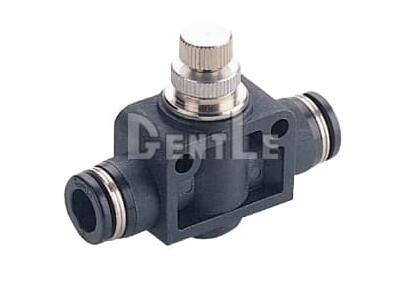What's a Pneumatic Quick-Connect Fitting? A Comprehensive Guide to Materials & Installation Methods!
Pneumatic quick-connect fittings, often referred to as air-saving connectors, are critical components in pneumatic systems, enabling seamless operation across diverse industries. Whether you're in manufacturing, automotive, electronics, or aerospace, these fittings ensure optimal system efficiency, reliability, and performance. This expert guide delves into the materials commonly used in pneumatic fittings, their key advantages, and the precise installation methods that will help you choose the best fit for your application.
Table of Contents
Overview of Pneumatic Quick-Connect Fittings
Pneumatic quick-connect fittings are designed to connect, distribute, and transfer compressed air with unparalleled efficiency, powering a wide range of pneumatic tools and machinery. These advanced connectors streamline processes by providing easy, tool-free assembly and disassembly, while also improving system performance with superior leak prevention. As integral components of high-performance industrial systems, pneumatic quick-connect fittings enhance workflow and minimize downtime, ensuring the smooth operation of even the most demanding processes.

GENTLE_SSU Union Straight Type Speed Controller
Key Features & Advantages:
- Effortless Assembly: Pneumatic quick-connect fittings enable quick, tool-free connections, reducting installation times and boosting productivity across industrial operations.
- Versatility Across Application: These fittings are suitable for a wide range of non-corrosive gases and fluids, making them adaptable to a variety of environments—from manufacturing plants to high-tech labs.
- Enhanced Leak Prevention: Designed for airtight sealing, these fittings significantly reduce the risk of leaks, safeguarding system integrity and minimizing operational disruptions.
Choosing the Right Material for Pneumatic Fittings
Material selection is critical when choosing pneumatic fittings, as the material affects performance, durability, and compatibility with specific gases or fluids. Below are the five most common materials used in pneumatic fittings:
| No. | Material | Key Characteristics |
| 1 | Aluminum | Lightweight, corrosion-resistant, ideal for low-pressure applications. |
| 2 | Brass | Durable, corrosion-resistant, and highly machinable, ideal for higher temperatures. |
| 3 | Stainless Steel | Exceptional corrosion resistance, designed for extreme conditions and high-cost applications. |
| 4 | Plastic | Cost-effective, durable, and resistant to mild acids, alkalis, and UV radiation, with high compatibility across various applications. |
| 5 | Composite Materials | High chemical and temperature resistance, incorporating materials like carbon, teflon, and fiberglass for enhanced strength. |
Step-by-Step Installation Process for Pneumatic Quick-Connect Fittings
Proper installation ensures pneumatic quick-connect fittings function at their best, maintaining system performance and extending their lifespan. Follow these three key steps for seamless installation:
Step 1. Inspect the Hose
Before beginning, carefully check the hose for any damage such as cracks or cuts that could affect its integrity. Clean the hose thoroughly to eliminate dust and debris, ensuring a flawless fit with the fitting. Confirm that the hose's outer diameter matches the fitting's specifications.
Step 2. Insert the Fitting
Gently insert the hose into the fitting, ensuring it reaches the stop point. This activates the internal clamping mechanism, ensuring a secure and airtight connection between the hose and the fitting.
Step 3. Post-Installation Verification
Once installed, perform a gentle pull test to confirm the hose is securely attached. Conduct a small pressure test to ensure all connections are sealed and the system is leak-free.
Ensuring Optimal Performance and Longevity
Though pneumatic quick-connect fittings may seem simple, their material properties and installation precision are critical to their performance. When selecting a fitting, it's essential to take several factors into account:
- Temperature Tolerance: Fittings and hoses are designed for specific temperature ranges. Exceeding these limits can lead to premature failure, typically due to hose rupture or material degradation.
- Sufficient Installation Space: Ensure ample space around the fitting to allow for proper airflow and avoid overheating, which could disrupt operations.
- Vibration Control: Minimizing vibrations helps maintain system stability and prevents unnecessary wear and tear, ensuring the longevity and reliability of the pneumatic system.
By carefully considering these factors when selecting and installing pneumatic quick-connect fittings, you can significantly enhance system efficiency, reduce maintenance costs, and extend the lifespan of your equipment.
Further Reading:
What's Pneumatic Fittings? A Quick-3-Minute Guide on Specs, Types, and Applications
Pneumatic Fitting Specifications and Types: How to Choose the Right One & Discover Its Benefits!